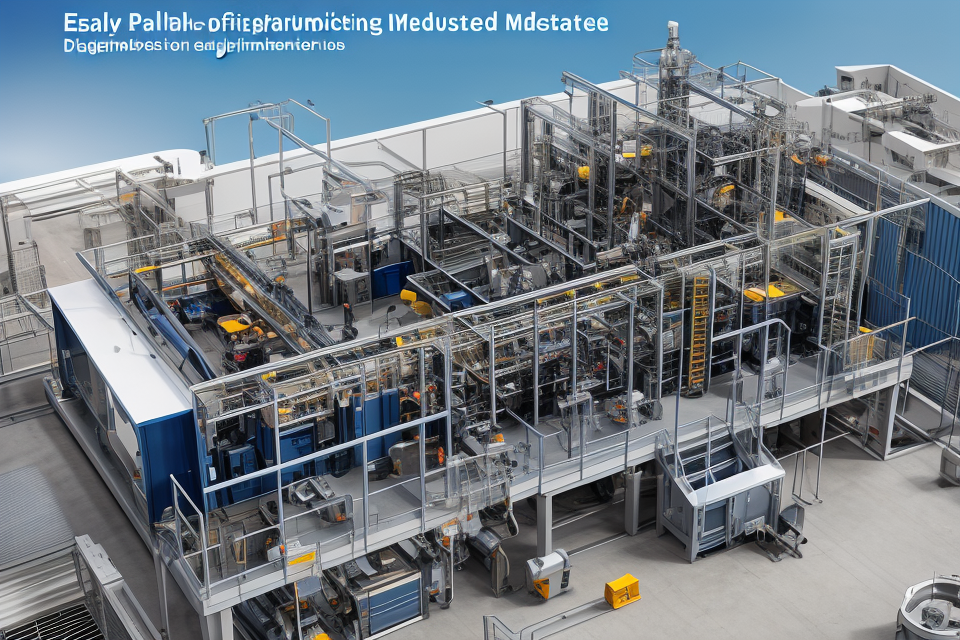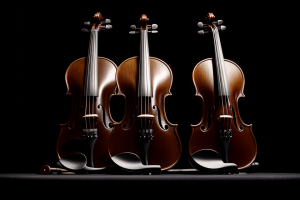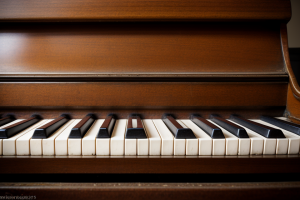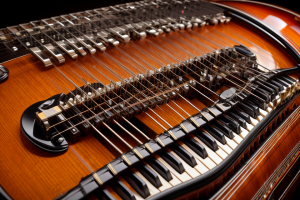
Instrument preventive maintenance is a critical aspect of ensuring the longevity and reliability of industrial equipment. It involves regularly scheduled inspections, cleaning, and upkeep of measuring instruments and gauges to prevent breakdowns and ensure accurate readings. In this comprehensive guide, we will delve into the details of instrument preventive maintenance, its importance, and best practices for implementation. From calibration to replacement, we will cover all aspects of maintaining measuring instruments and gauges to maximize their performance and minimize downtime. So, buckle up and get ready to learn about the ins and outs of instrument preventive maintenance!
What is Instrument Preventive Maintenance?
Definition and Importance
Definition of Instrument Preventive Maintenance
Instrument preventive maintenance refers to the regular inspection, cleaning, calibration, and repair of measuring instruments and equipment used in various industries. These instruments are critical for accurate measurement and data collection, and their proper functioning is essential for maintaining quality and efficiency in the production process.
Why is it Important?
Preventive maintenance is crucial for ensuring the accuracy and reliability of instrument measurements. Without regular maintenance, instruments can become out of calibration, leading to inaccurate data and costly errors. This can result in increased scrap and rework, decreased productivity, and even safety hazards. By implementing a preventive maintenance program, organizations can minimize downtime, extend the life of their instruments, and ensure compliance with industry regulations and standards.
Key Components of Instrument Preventive Maintenance
Instrument preventive maintenance is a crucial aspect of ensuring the proper functioning of instruments used in various industries. It involves a series of activities that are carried out to prevent instrument failure and ensure accurate measurements. The key components of instrument preventive maintenance are inspection and testing, calibration, and cleaning and lubrication.
Inspection and Testing
Inspection and testing are the first steps in instrument preventive maintenance. During inspection, the instrument is visually examined for any signs of damage, wear, or corrosion. This process helps identify any potential issues that could affect the instrument’s performance. Testing involves verifying the instrument’s accuracy and functionality by comparing its readings with known standards. This process helps to ensure that the instrument is measuring accurately and is within the acceptable range.
Calibration
Calibration is another critical component of instrument preventive maintenance. It involves adjusting the instrument to ensure that it reads within the acceptable range. Calibration should be performed regularly to ensure that the instrument is measuring accurately. This process is crucial for instruments used in critical applications such as healthcare, where inaccurate measurements can have severe consequences.
Cleaning and Lubrication
Cleaning and lubrication are also essential components of instrument preventive maintenance. Instruments that are used in harsh environments or that come into contact with substances such as chemicals or moisture require regular cleaning to prevent the buildup of dirt, grime, or other contaminants. This buildup can affect the instrument’s accuracy and functionality. Lubrication is also important to ensure that moving parts function smoothly and to prevent corrosion.
In conclusion, instrument preventive maintenance is crucial for ensuring the proper functioning of instruments used in various industries. The key components of instrument preventive maintenance include inspection and testing, calibration, and cleaning and lubrication. Regular maintenance of instruments can help prevent instrument failure, ensure accurate measurements, and extend the instrument’s lifespan.
Types of Instruments Requiring Preventive Maintenance
Laboratory Instruments
Laboratory instruments are a crucial part of any scientific research or analysis. These instruments are used to measure, analyze, and test various samples, substances, and materials. Some of the most common laboratory instruments include spectrophotometers, microscopes, and balances.
Spectrophotometers
Spectrophotometers are instruments used to measure the absorption or transmission of light by a substance. They are commonly used in chemical, biological, and pharmaceutical research to determine the concentration of a substance in a sample. Spectrophotometers are delicate instruments that require regular preventive maintenance to ensure accurate and reliable results. This maintenance includes cleaning the instrument, checking the calibration, and replacing any worn-out parts.
Microscopes
Microscopes are instruments used to magnify small objects and organisms that are not visible to the naked eye. They are commonly used in biological and medical research to study cells, tissues, and microorganisms. Microscopes are sensitive instruments that require regular preventive maintenance to ensure clear and sharp images. This maintenance includes cleaning the lenses, adjusting the focus, and checking the light source.
Balances
Balances are instruments used to measure the weight or mass of an object. They are commonly used in chemical, biological, and pharmaceutical research to measure the amount of a substance in a sample. Balances are precise instruments that require regular preventive maintenance to ensure accurate and reliable results. This maintenance includes calibrating the balance, checking the platform, and replacing any worn-out parts.
In summary, laboratory instruments are an essential part of any scientific research or analysis. Spectrophotometers, microscopes, and balances are some of the most common laboratory instruments that require regular preventive maintenance to ensure accurate and reliable results. Regular maintenance includes cleaning, calibration, and replacement of worn-out parts.
Process Control Instruments
Process control instruments are essential components in various industries for monitoring and controlling processes. These instruments require regular preventive maintenance to ensure accurate and reliable operation. Here are some of the common process control instruments that require preventive maintenance:
Pressure Transmitters
Pressure transmitters are used to measure the pressure of fluids or gases in a process. They are crucial in ensuring that the process is operating within the required pressure range. Preventive maintenance for pressure transmitters includes cleaning the sensors, checking the connections, and calibrating the instrument. Calibration is critical to ensure that the instrument reads the correct pressure value.
Temperature Sensors
Temperature sensors are used to measure the temperature of the process. They are essential in ensuring that the process is operating within the required temperature range. Preventive maintenance for temperature sensors includes cleaning the sensors, checking the connections, and calibrating the instrument. Calibration is critical to ensure that the instrument reads the correct temperature value.
Flow Meters
Flow meters are used to measure the flow rate of fluids or gases in a process. They are essential in ensuring that the process is operating within the required flow rate range. Preventive maintenance for flow meters includes cleaning the sensors, checking the connections, and calibrating the instrument. Calibration is critical to ensure that the instrument reads the correct flow rate value.
Regular preventive maintenance of these process control instruments is necessary to ensure that they continue to function accurately and reliably. This will help to prevent unexpected downtime and ensure that the process is operating within the required parameters.
Best Practices for Instrument Preventive Maintenance
Establishing a Preventive Maintenance Program
Establishing a preventive maintenance program is crucial for ensuring the longevity and optimal performance of instruments. This section will outline the steps involved in setting up a preventive maintenance program for instruments.
Setting up a Schedule
The first step in establishing a preventive maintenance program is to set up a schedule. This schedule should include regular maintenance tasks that need to be performed on instruments, such as cleaning, calibration, and inspection. The schedule should also take into account the specific needs of each instrument, including the frequency of use, environmental conditions, and expected lifespan.
Assigning Responsibilities
Once the schedule has been established, the next step is to assign responsibilities. This involves identifying the personnel who will be responsible for performing the maintenance tasks and ensuring that they have the necessary training and resources to do so. It is important to assign responsibilities clearly and communicate them to all relevant personnel to ensure that everyone is aware of their roles and responsibilities.
Developing a Checklist
To ensure that all maintenance tasks are completed correctly and on time, it is important to develop a checklist. This checklist should include all the tasks that need to be performed on each instrument, as well as the frequency with which they should be performed. The checklist should also include any specific instructions or guidelines for each task, such as the use of specific cleaning agents or calibration procedures.
By following these steps, it is possible to establish a comprehensive preventive maintenance program for instruments that will help to ensure their longevity and optimal performance.
Implementing Effective Maintenance Techniques
Cleaning and Sanitizing
Regular cleaning and sanitizing of instruments is essential to prevent the buildup of dirt, grime, and other contaminants that can interfere with their proper functioning. Here are some best practices for cleaning and sanitizing instruments:
- Use the right cleaning solutions: Choose cleaning solutions that are safe for the specific type of instrument and material it is made of. Avoid using harsh chemicals or abrasive cleaners that can damage the instrument.
- Follow the manufacturer’s instructions: Each instrument may require a specific cleaning process, so it is important to follow the manufacturer’s instructions carefully.
- Use the right cleaning method: Depending on the type of instrument, different cleaning methods may be required. For example, ultrasonic cleaners may be suitable for some instruments, while others may require manual cleaning with a soft cloth or brush.
Calibration Procedures
Calibration is the process of adjusting the instrument to ensure that it is measuring accurately. Regular calibration is necessary to maintain the accuracy and reliability of the instrument. Here are some best practices for calibration procedures:
- Use a calibration standard: A calibration standard is a device that is used to verify the accuracy of the instrument. It is important to use a calibration standard that is traceable to a national standard to ensure the accuracy of the calibration.
- Schedule regular calibration: The frequency of calibration will depend on the type of instrument and its usage. It is important to schedule regular calibration to ensure that the instrument is measuring accurately.
- Document the calibration results: It is important to document the calibration results to keep a record of the instrument’s accuracy over time. This documentation can be used to identify any trends or issues that may need to be addressed.
Documenting Results
Documenting the results of preventive maintenance is essential to ensure that the instrument is functioning properly and to identify any issues that may need to be addressed. Here are some best practices for documenting results:
- Keep a log of maintenance activities: Keep a log of all maintenance activities, including the date, time, and type of maintenance performed. This log can be used to track the instrument’s maintenance history and identify any patterns or issues.
- Include photographs or videos: Including photographs or videos of the instrument can help to document any issues or damage that may have occurred. This documentation can be useful in identifying the cause of any issues and in determining the appropriate repair or replacement.
- Keep the documentation up to date: It is important to keep the documentation up to date to ensure that it is accurate and relevant. This documentation can be used to identify any issues that may need to be addressed and to plan for future maintenance activities.
Common Challenges in Instrument Preventive Maintenance
Resource Constraints
Limited time and budget
- Insufficient resources for preventive maintenance
- Balancing preventive maintenance with other operational tasks
Lack of skilled personnel
- Inadequate training or expertise for instrument maintenance
- Difficulty in recruiting and retaining skilled technicians
Strategies for Overcoming Resource Constraints
- Prioritizing preventive maintenance tasks based on criticality and risk
- Implementing a proactive maintenance schedule to optimize resource allocation
- Leveraging technology, such as condition monitoring and predictive maintenance tools, to enhance efficiency and reduce labor requirements
- Collaborating with vendors or external service providers for specialized expertise and resources
- Investing in training and professional development programs for in-house technicians to build capacity and capabilities
By addressing resource constraints, organizations can ensure that their instrument preventive maintenance program is sustainable and effective in preserving the performance and reliability of their instruments.
Managing Obsolescence
One of the biggest challenges in instrument preventive maintenance is managing obsolescence. This refers to the issue of dealing with outdated equipment that may no longer be supported by the manufacturer or that may not be compatible with new technologies. Here are some specific issues that can arise when managing obsolescence:
- Dealing with outdated equipment
- Equipment that is no longer supported by the manufacturer may not have access to the latest updates, repairs, or replacement parts. This can make it difficult to maintain the equipment and ensure that it is functioning properly.
- Equipment that is no longer supported may also be more prone to breaking down or experiencing technical issues, which can disrupt operations and result in downtime.
- Keeping up with new technologies
- As new technologies are developed, older equipment may become obsolete and may no longer be able to support the latest software or protocols. This can make it difficult to integrate new technologies with existing equipment, which can hinder productivity and efficiency.
- Additionally, new technologies may require specialized skills or training to operate and maintain, which can be a challenge if the staff is not familiar with the new technologies.
Managing obsolescence requires a proactive approach to instrument preventive maintenance. This may involve regularly assessing the condition of equipment and identifying any potential issues or areas that may need to be updated. It may also involve working with a maintenance provider or manufacturer to develop a plan for updating or replacing equipment as needed. By staying up-to-date with the latest technologies and ensuring that equipment is properly maintained, companies can avoid the costs and disruptions associated with outdated equipment and ensure that their operations run smoothly.
The Future of Instrument Preventive Maintenance
Emerging Technologies and Trends
As technology continues to advance, the field of instrument preventive maintenance is also evolving. There are several emerging technologies and trends that are expected to shape the future of this field. Here are some of the most notable ones:
Predictive maintenance
Predictive maintenance is a proactive approach to maintenance that uses data analytics and machine learning algorithms to predict when a piece of equipment is likely to fail. By analyzing data from sensors and other sources, predictive maintenance can identify patterns and trends that indicate when a failure is likely to occur. This allows maintenance teams to take preventive action before a failure occurs, reducing downtime and improving overall equipment reliability.
Remote monitoring and diagnostics
Remote monitoring and diagnostics involve using sensors and other technologies to monitor the performance of equipment remotely. This allows maintenance teams to detect issues early and take preventive action before they become serious problems. Remote monitoring and diagnostics can also help to reduce downtime by enabling maintenance teams to diagnose and fix issues quickly and efficiently, even when they are not physically present at the equipment.
Condition-based maintenance
Condition-based maintenance is an approach to maintenance that is based on the actual condition of equipment rather than a fixed schedule. By monitoring the performance of equipment and using data analytics to identify patterns and trends, maintenance teams can determine when a piece of equipment is likely to require maintenance. This allows maintenance teams to focus their efforts on the equipment that needs it most, rather than following a fixed schedule that may not be necessary.
Internet of Things (IoT)
The Internet of Things (IoT) refers to the network of physical devices, vehicles, buildings, and other items that are embedded with sensors, software, and other technologies that enable them to connect and exchange data. In the context of instrument preventive maintenance, IoT technologies can be used to monitor the performance of equipment and provide real-time data on its condition. This can help maintenance teams to identify issues early and take preventive action before they become serious problems.
Overall, these emerging technologies and trends are expected to have a significant impact on the field of instrument preventive maintenance. By leveraging these technologies, maintenance teams can improve equipment reliability, reduce downtime, and optimize their maintenance processes.
The Role of Artificial Intelligence
- Enhancing maintenance processes:
- Predictive maintenance using machine learning algorithms
- Identifying potential equipment failures before they occur
- Reducing downtime and maintenance costs
- Automating routine tasks:
- Streamlining scheduling and inventory management
- Optimizing resource allocation and workload distribution
- Enabling technicians to focus on more complex tasks.
FAQs
1. What is instrument preventive maintenance?
Instrument preventive maintenance refers to the routine upkeep and servicing of measuring instruments, such as thermometers, gauges, and testers, to ensure they are in good working condition and accurate in their measurements.
2. Why is instrument preventive maintenance important?
Preventive maintenance of instruments is crucial to ensure the accuracy and reliability of the measurements taken. Regular servicing helps to detect and correct any issues before they can affect the measurements, thereby minimizing errors and reducing the risk of costly equipment repairs or replacements.
3. What are the benefits of instrument preventive maintenance?
The benefits of instrument preventive maintenance include improved accuracy and reliability of measurements, increased equipment lifespan, reduced downtime, and lower repair costs.
4. How often should instrument preventive maintenance be performed?
The frequency of instrument preventive maintenance depends on the type of instrument, its intended use, and the environment in which it is used. It is generally recommended to perform routine maintenance at least once a year or as recommended by the manufacturer.
5. What is involved in instrument preventive maintenance?
Instrument preventive maintenance typically involves cleaning, inspecting, and calibrating the instrument to ensure it is functioning properly. Other tasks may include lubricating moving parts, replacing worn components, and testing the instrument’s accuracy.
6. Who should perform instrument preventive maintenance?
Instrument preventive maintenance should be performed by trained professionals who have the knowledge and skills to properly service and calibrate the instruments. This may include in-house maintenance staff or third-party service providers.
7. How can I know if my instrument needs preventive maintenance?
There are several signs that an instrument may need preventive maintenance, including inaccurate readings, slow response times, or unusual noises or vibrations. It is also a good idea to perform routine maintenance at regular intervals, even if the instrument appears to be functioning properly.
8. What should I do if I notice an issue with my instrument during preventive maintenance?
If an issue is detected during instrument preventive maintenance, it should be documented and addressed promptly. Depending on the severity of the issue, it may be necessary to repair or replace the instrument or to adjust its calibration.
9. How can I ensure that my instrument is properly maintained?
To ensure that your instrument is properly maintained, it is important to follow the manufacturer’s recommendations for preventive maintenance, to use the instrument only for its intended purpose, and to store it properly when not in use. It is also a good idea to keep records of maintenance activities and to regularly check the instrument’s accuracy.







